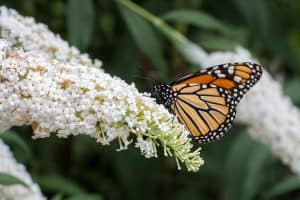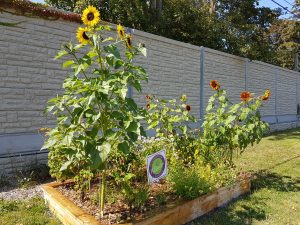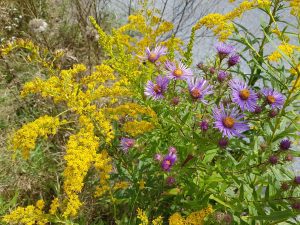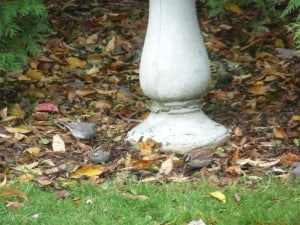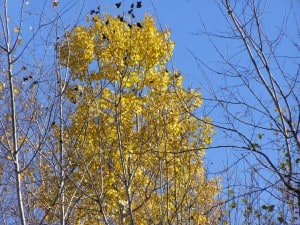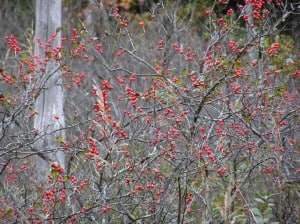For anyone paying attention, the biggest story of the past summer has been the fury unleashed by planet Earth as a result of climate change. As Clive Hunter, an Australian public intellectual, said on CBC Radio’s Ideas recently, “What we’re now confronted with is a wakened, angry, raging beast.” The evidence is everywhere: the worst fire season ever in B.C.; the worst wildfire ever in Los Angeles; hundreds of billions of dollars of hurricane devastation in Houston, the Caribbean and Florida; catastrophic flooding affecting millions in India, Nepal and Bangladesh; temperatures too hot for jets to take off in Phoenix – and the list goes on.
It’s hard not to despair. Equally despairing, however, is that denial – or simply ignoring or downplaying the threat of climate change – is still rampant. And not just on the part of Donald Trump. How often does the topic come up in your own circle of family and friends? If you listened to hurricane coverage on American TV networks, you wouldn’t have even heard the words climate change. However, what climate science research has learned and is predicting for the future are facts – not ideologies, opinions or preferences. They come from three hundred years of perfecting the scientific method and are as robust and well-defended as any body of knowledge out there. Sitting back and simply being “hopeful” that things won’t be as bad as science is telling us is a recipe for even greater disaster. We cannot let skeptics dismiss these disasters as natural weather events we cannot influence. That being said, the scope of the necessary response in terms of mitigation and adaptation is far beyond anything politicians are currently proposing. Many experts believe it will require nothing less than a complete re-thinking of our economic system and of humankind’s relationship with the natural world.
On a more positive note, a heartening story this summer has been the stellar rebound in monarch butterfly numbers. Whereas last year I may have seen a few dozen, this year I’ve observed hundreds. Don Davis, an Ontario monarch expert who tags these insects, told me this week that he found over 100 caterpillars near Cobourg in just a few hours of searching. He also said that 2000 monarchs were at the tip of Point Pelee National Park on September 8 and that there were recently 100 or more on the west beaches of Presqu’ile Provincial Park. According to Dr. Chip Taylor of Monarch Watch, there is a good prospect that the overwintering population in Mexico will increase from the 2.91 hectares of last year to 4 hectares or better this coming winter.
The most likely explanation for the boom in numbers is simply the weather. This summer did not see the hot, dry conditions of recent years, which killed wildflowers and reduced the availability of nectar. Weather conditions were also good this spring for the monarch’s migration from Mexico to Canada. Monarchs are extremely vulnerable to weather extremes, many of which are linked to climate change. This is true during the breeding season, along the migration route and on their Mexican wintering grounds.
The public is becoming much more aware of the need to protect monarchs and pollinators in general. An indication of this is the growing popularity of pollinator gardens. These are gardens planted predominantly with flowers that provide nectar and pollen for a wide range of pollinator species from spring through fall. Host plants (e.g., milkweed) on which butterflies can lay their eggs should also be included. Here in the Kawarthas, nearly 180 pollinator gardens have been registered with Peterborough Pollinators, a group dedicated to creating a pollinator-friendly community. If you wish to register your garden, please go to PeterboroughPollinators.com/Register. Once registered, you can pick up a garden sign by emailing ptbopollinators@gmail.com A map of existing gardens will be on display at the Peterborough Pollinators’ booth at the Purple Onion Festival on September 24 at Millennium Park. There will also be pollinator exhibits and garden signs will be available.
Looking ahead to the fall, here is a list of events in nature that are typical of autumn in the Kawarthas.
Mid- to late September
· Fall songbird migration is in full swing. Migrants such as warblers are often in mixed flocks with chickadees and can be coaxed in for close-up views by using “pishing”. To see and hear this birding technique in action, go to http://bit.ly/2cpznE8
· Broad-winged hawks migrate south over the Kawarthas in mid-September. Sunny days with cumulous clouds and northwest winds are best. Watch for high-altitude “kettles”, which is a group of hawks soaring and circling in the sky. Migration usually peaks on about September 15.
· Thanks to ample rain, this should be a great fall for mushrooms. Kawartha Land Trust’s Stony Lake Trails are a great destination for mushroom-viewing. Park at 105 Reid’s Road. Details at http://bit.ly/2h3nYJg
· Peterborough Field Naturalists hold their Sunday Morning Nature Walks this month and next. Meet at the Riverview Park and Zoo parking lot at 8 am and bring binoculars. Indoor meetings take place on the second Wednesday of the month. For more information, go to peterboroughnature.org
· As the goldenrods begin to fade, asters take centre stage. The white flowers of heath, panicled and calico asters, along with the purple and mauve blossoms of New England, purple-stemmed and heart-leaved asters provide much of the show. Visit http://bit.ly/2fhW4sN (Ontario Wildflowers) for tips on identifying these beautiful but under appreciated plants.
· Listen for the constant calling of blue jays and the metronome-like “chuck-chuck…” call of chipmunks, which can go on for hours. The call is often given in response to danger such as the presence of a hawk.
October
· Fall colours in the Kawarthas usually peak early in the month. The sunshine and cool weather in September should mean excellent colour this year. County Roads 620 and 504 around Chandos Lake east of Apsley makes for a great colour drive.
· Don’t miss the Harvest Moon. This year it occurs on October 5. The Harvest Moon is the full moon closest to the fall equinox (September 22).
· Sparrow migration takes centre stage this month, making October one of the busiest times of the year for backyard feeders. Scatter millet or finch mix on the ground to attract dark-eyed juncos and both white-throated and white-crowned sparrows.
· Indian Summer days are magical. Watch for floating threads of “ballooning” spiders.
· Ecology Park holds its “Little Tree Sale” on October 15. Fall is a great time to plant trees.
· A tide of yellow spreads across the landscape in mid- through late October. The colour is supplied courtesy of trembling and bigtooth aspens, balsam poplar, silver maple, white birch, and, at month’s end, tamarack.
· As ducks move southward, consider a visit to the Lakefield sewage lagoon. It is located on the south side of County Road 33, just south of Lakefield. Be careful to avoid blocking the gate when you park. Goldeneye, buffleheads, scaup and mergansers are often present in large numbers. If you have a spotting scope, be sure to take it along. The sewage lagoon is one of the best birding locations in the Kawarthas.
· Watch for Venus and Mars at dawn and Saturn in the evening.
· The first northern finches usually start turning up in late October. To learn which species to expect this fall and winter, Google “winter finch forecast 2017-2018”. The forecast, compiled by Ron Pittaway, is usually available online by early October.
· On October 25, Jacob Rodenburg will speak to the Peterborough Horticultural Society on “Pathway to Stewardship: How we teach kids about the environment” The meeting , which is open to all, takes place at the Peterborough Lions Centre, 347 Burnham Street.
November
· Oaks, tamaracks and silver maples are about the only native deciduous trees that still retain foliage in early November. The brownish-orange to burgundy leaves of red oaks stand out with particular prominence. At a glance, you can see just how common oaks are in many areas of the Kawarthas.
· We return to Standard Time on Sunday, November 5, and turn our clocks back one hour. Sunrise on the 5th is at 6:56 am and sunset at 4:57 pm for a total of only 10 hours of daylight. Compare this to the 15 1/2 hours we enjoyed back in June!
· The red berries of wetland species like winterberry holly and high-bush cranberry provide some much needed November colour.
· Most of our loons and robins head south this month. However, small numbers of robins regularly overwinter in the Kawarthas. Their numbers will likely be much lower than last year, given the small wild grape crop. Grapes are a staple food for winter robins.
· Ball-like swellings known as galls are easy to see on the stems of goldenrods. If you open the gall with a knife, you will find the small, white larva of the goldenrod gall fly inside. In the spring, it will emerge as an adult fly.
· Damp, decomposing leaves on the forest floor scent the November air.
· With the onset of cold temperatures, wood frogs, gray treefrogs, chorus frogs, and spring peepers take shelter in the leaf litter of the forest floor and literally become small blocks of amphibian ice. Glycerol, acting as an antifreeze, inhibits freezing within the frogs’ cells.
I would like to thank Martin and Kathy Parker, Tim Dyson, Cathy Dueck and Gordon Johnson for having done such an admirable job filling in for me this summer. We are fortunate in the Kawarthas to have so many people with extensive knowledge of nature and environmental education.
